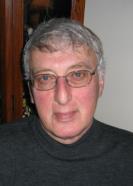 The following article was first published in Engagement, Vale’s magazine for socially responsible and sustainable mining.
The following article was first published in Engagement, Vale’s magazine for socially responsible and sustainable mining.
CVRD school program approaches its tenth anniversary and celebrates its positive results
“I now enjoy studying more. Before the program, I felt embarrassed and had difficulty with some reading. Now I’m not embarrassed about anything and can read without a problem. “Testimonies like this one by Layla Leite Soares, who is ten and a pupil at the Henrique Rodrigues de Barros Hall School, in the district of Penha the Capim, in Aimorés (MG), represent significant pedagogical advances. And they reflect a host of similar reports in the 24 Brazilian municipal districts covered by the school that Vale (EQV), or “CVRD School program(1), set up in 1999 by the CVRD Foundation (FVRD), in partnership with the Municipal Departments of Education and the Center for Education and Documentation for Community Action (Cedac) (2).
The program was set up to improve public education sector by qualifying and training teachers and pupils. Today the program covers 450 schools, reaching more than 90 thousand people. Nearing the end of its tenth year in existence, the program has had significant results, such as in the case of Curionópolis, in Pará “One of the effects of the project has been the drop in the numbers of students failing their exams in our local schools. In 2001, around 43% failed – by 2006, this had dropped to 19.5%,” says Maria do Amparo Costa e Silva, the Secretary of Education for the district.
Although the statistics speak for themselves, the real merits of the Vale School program that go beyond the rise in the numbers of pupils in the public system passing their exams. The program’s methodology is geared towards the exercise of citizenship and encouragement. The idea is that to be a citizen in school is to learn about local and universal matters, to be treated with dignity, to have access to up-to-date, quality materials and equipment; to have the opportunities to develop one’s capacities, and to share experiences and opinions.
Read more


























